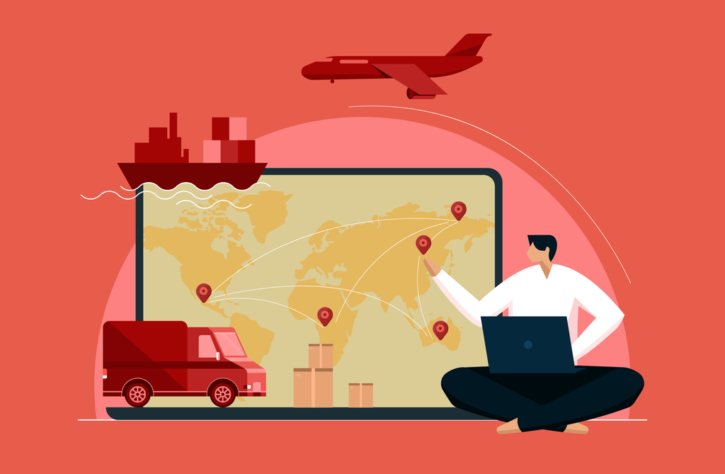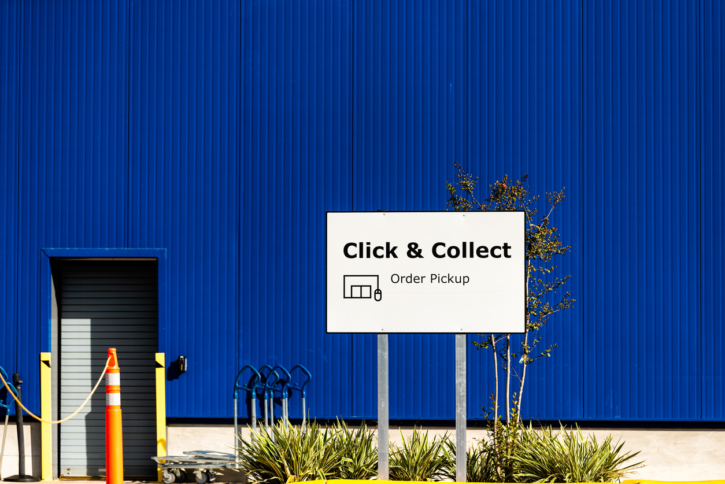How to optimise your customer’s buying journey step by step
Your customers are your most precious asset.
If you’re here, it’s probably because you want to look after them in order to build a stable income year after year.
And you’re right.
Because if you don’t think about customer satisfaction throughout the whole buying process, you’re likely to lose out. Soaring churn rates, negative feedback, sluggish traffic… E-tailers have everything to lose if they neglect their customers.
So, how can you optimise the buying journey to offer the best customer experience possible?
Here are a few tips to help you achieve this!
What is the customer journey? (definition)
The customer journey includes all the stages the customer goes through during a physical or virtual transaction: finding information, selecting the product, adding it to the basket and checking out, after-sales service, etc.
All the key moments before and after a sale are part of the customer journey.
By analysing the customer journey, you will be able to identify the most frequent points of contact between your brand and your customers, as well as areas for improvement.
This will allow you to optimise your customers’ journey and their overall experience on your e-commerce site.
💡
For 88% of consumers, the customer experience offered by a company is as important as their products or services.
What are the different stages in the customer’s buying process when it comes to e-commerce?
To explain how to optimise the customer journey, we have broken it down into eight stages. Below, we travel the path taken by a customer to make an online purchase and how to make it a better experience for them.
1. Looking for information
When a customer feels a need, they begin by looking for the best offer. Where do they start? On the Internet. To ensure your site is seen by as many people as possible during this first phase, you’ll need to develop your online presence. Blog articles, FAQs, ebooks, comparisons, practical guides, etc. All content is a good way to get in touch with your future customers right at the start of the buying process.
How do you optimise this?
To attract more people to your e-commerce site and to convert them into customers, we advise you to develop an Inbound marketing strategy. Then, analyse the results. For example, to find out the level of engagement of users on your website, you can look at conversion rate. Conversion rate is one of the 10 e-commerce KPIs to track.
2. The comparison phase
Once a customer has sorted through the products and is left with two or three to choose from, they will go further and compare them with the utmost precision. At this stage, their goal is to ensure they make the best choice. The challenge, on your side, is therefore to stand out from the competition.
Here’s what buyers consider at this stage:
- price
- options
- client reviews
- characteristics
- user experience, etc.
How do you optimise this?
To optimise this stage in the buying process, we advise you to do all you can to make life easier for your customers. Your product descriptions should be detailed, translated into several languages (if you sell internationally) and include visuals.
For example, if you sell make-up, you can include videos showing models applying your products. 88% of marketers say they increase the conversion rate of their product listings when they include a video.
We also recommend highlighting your customer reviews on your product listings. This evidence will show your future customers that your products are of high quality and popular with your audience.
Finally, whether you sell clothing, accessories, shoes, glasses, make-up or jewellery, you can offer virtual fitting and styling to your customers. This will allow them to try your products before adding them to their baskets and actively participate in reducing the return rate.
3. Making a decision
It’s a wrap! The customer has decided: it’s YOUR product that they want to order.
At this stage of the conversion process, your mission is to make the purchasing experience as pleasant as possible to avoid the customer changing their mind.
How do you optimise this?
Here, there are three main points to bear in mind:
- delivery methods
- returns policy
- payment solutions
To finalise their order, your customer will look for their favourite delivery method (collection point, post office, to their home, Click & Collect, etc.). Make sure you have as many options as you can to satisfy as many buyers as possible.
Concerning the returns policy, it must be flexible and not too restrictive for the customer. For example, you could offer free returns at a collection point like online retail company, Zalando does.
Finally, as with delivery methods, payment solutions need to be numerous. For example, some people swear by PayPal.
4. Receiving the product
72% of consumers consider delivery to be a decisive factor in the buying process. According to them, this is even the most crucial stage in an e-commerce transaction. It is therefore essential to take care of this stage if you want to optimise the customer’s buying journey on your e-commerce site.
How do you optimise this?
To ensure a satisfactory delivery, we advise you to:
- optimise your stock management
- choose a trusted delivery company
- stay available before, during and after delivery
- avoid overusing packaging, while of course protecting your products
- choose, wherever possible, eco-friendly packaging
- allow your customer to track their delivery in real time
5. Customer feedback
Once the parcel has been received, the next stage is the customer review.
It is at this precise moment the customer potentially moves from a single conversion to loyalty.
To find out if they are satisfied or not with the buying process up to this point, we advise you to send a satisfaction survey. You can also get straight to the point by asking them to leave you a review of the product you have purchased.
💡
If your product listings don’t yet include a “reviews” tab, we advise you to include one and also to allow your customers to add photos to their reviews. This is a real plus at the information gathering stage.
How do you optimise this?
Depending on the age and online behaviour of your target audience, you will need to choose the best channel for asking them for customer reviews: email, SMS, via social media, etc. To collect as much feedback as possible, it may be strategic to offer a reward in exchange for a review.
For example, you could offer 10 loyalty points per review or a free sample with their next order.
As well as making your customers want to order from your online shop again, this will encourage your prospects to place their first order.
6. After-sales service
In the event of a problem, consumers must be able to get help from your after-sales service. Non-receipt of an order, defective products, complaints, requests for refunds, malfunctions: the reason for dissatisfaction can be many and varied. It is essential to be able to provide answers and to reassure the customer in all circumstances, thus optimising the customer’s buying journey through to the end. To supplement the after-sales service, you can use a FAQ page to create a basic support package containing answers to frequently asked questions to reassure your customers.
How do you optimise this?
To optimise your e-commerce site’s after-sales service, you need to ensure you respond quickly to complaints and claims. You will need to be flexible and, if necessary, offer gestures. For example, if a product gets broken in transit, you can send a new one out free of charge. This will increase customer loyalty and confidence in your site.
7. Loyalty
When it comes to customer loyalty, this is a stage in the buying process in its own right. Because acquiring new customers is one thing. But keeping them is another. To do this, you need to put strategies in place to encourage your customers to remain loyal to you.
How do you optimise this?
Here are a few methods to try out to encourage your customers to take action:
- send them regular promotional offers and discount codes by email
- set up a referral programme
- encourage them to join your loyalty programme and collect points
- be present on social media
- write and send a newsletter to your customers, etc.
8. Recommendations
Finally, if all has gone well to that point, your customer may go so far as to recommend your product and/or brand to friends and family. This is the Holy Grail for salespeople ( not to mention its free publicity!).
As a result, your customer will become an ambassador and you’ll be able to attract new customers effortlessly. Recommendations are an excellent way of improving your brand image and your conversion rate.
How do you optimise this?
To optimise this, we advise you personalise the relationship you have with your customers. For example, you can send them a special offer for their birthday, invite them to an event, offer them product previews, etc. The more the customer feels unique and connected to your brand, the more they will want to return the favour and therefore promote your brand by word of mouth.
The e-commerce customer’s buying journey: a summary
As you can see, to optimise the customer’s buying journey, each of these stages needs to be considered individually:
- looking for information
- the comparison phase
- decision-making
- receiving the product
- customer feedback
- after-sales service
- loyalty
- recommendations
To take your quest for customer satisfaction a step further, here are nine strategies for making your e-commerce business more eco-friendly. ♻️
At TextMaster, we 💙 to help you develop your business. That’s why we offer a 5 ⭐️⭐️⭐️⭐️⭐️ service translating e-commerce websites!






